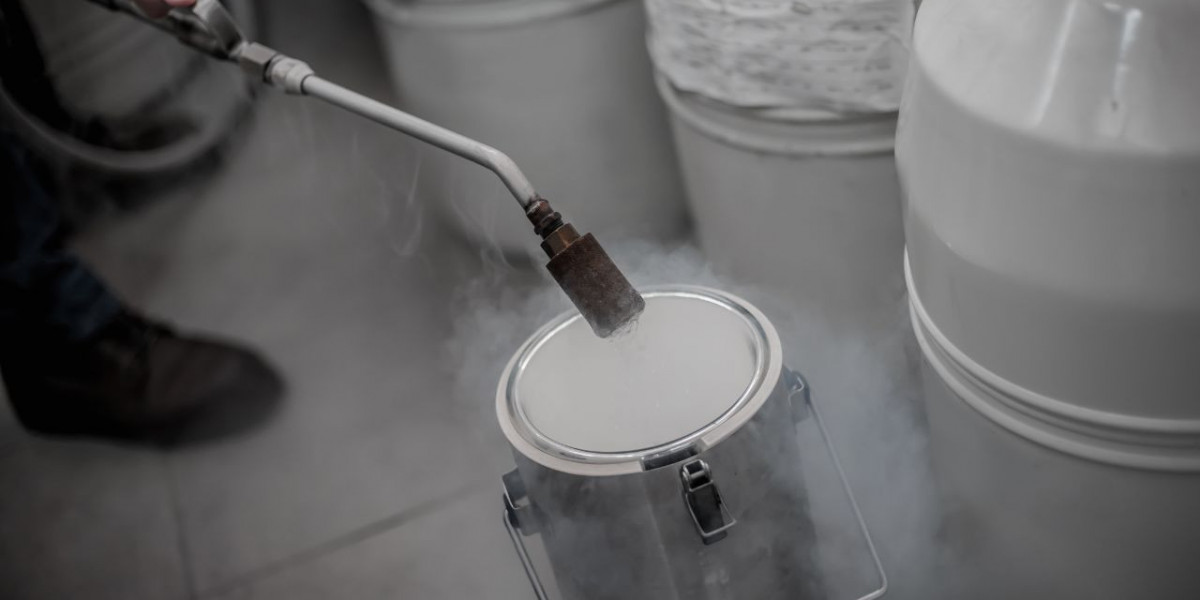The global cryogenic equipment market size value reached around USD 12.97 Billion in 2024 due to use of cryogenic equipment in many industrial applications. The growing emphasis on industrial gases for applications in healthcare, food processing, and electronics further contributes to market expansion. As a result, the industry is expected to grow at a CAGR of 6.70% during the forecast period of 2025-2034 to attain a value of USD 24.81 Billion by 2034. The increasing demand for liquefied natural gas (LNG) as a cleaner energy source significantly boosts the need for cryogenic equipment, particularly in energy and power sectors of North America, Europe, and Asia.
Understanding Cryogenic Equipment
Cryogenic equipment refers to tools and systems designed to handle, store, and transport materials at extremely low temperatures, often below –150°C. These include cryogenic storage tanks, vaporizers, valves, pumps, and other components. Such equipment is essential in the processing of liquefied gases like oxygen, nitrogen, argon, hydrogen, and LNG.
The role of cryogenic technology extends beyond traditional energy and industrial uses. It plays a vital role in modern applications such as advanced healthcare treatments, superconducting technologies, and even space exploration. As industries expand and adopt more energy-efficient and environmentally friendly solutions, cryogenic equipment is becoming indispensable.
Market Drivers
1. Rising LNG Demand
The push for cleaner energy sources is reshaping the global energy landscape. LNG, known for its lower carbon emissions compared to coal and oil, is gaining importance worldwide. Countries in Asia-Pacific, including China, India, Japan, and South Korea, are rapidly expanding their LNG import and storage infrastructure. The demand for cryogenic storage tanks, transportation systems, and regasification terminals is expected to grow significantly in line with this trend.
2. Expanding Healthcare Applications
Healthcare is another key sector fueling demand for cryogenic equipment. Liquid oxygen and nitrogen are extensively used in medical treatments, surgeries, and diagnostic procedures. Additionally, cryopreservation of biological samples, vaccines, and tissues relies heavily on cryogenic freezers and containers. The COVID-19 pandemic accelerated investments in cold chain logistics and medical storage, highlighting the importance of cryogenic systems in global healthcare.
3. Food and Beverage Industry Growth
In the food processing industry, cryogenic gases such as liquid nitrogen are used for quick-freezing perishable items, extending shelf life while preserving quality. The increasing popularity of frozen and packaged food products across developed and emerging economies has directly supported market growth.
4. Electronics and Industrial Gases
Cryogenic technology is also vital in electronics manufacturing, particularly in semiconductor fabrication, which requires high-purity gases. With the global electronics market experiencing continuous expansion, cryogenic equipment demand will remain strong. Industrial gases like helium and argon, crucial for electronics and metallurgy, also depend on advanced cryogenic storage and handling systems.
Regional Insights
North America
North America, especially the United States, is one of the leading markets for cryogenic equipment. The region’s strong focus on LNG production and exports has created substantial demand. Additionally, robust healthcare infrastructure and technological advancements further support market expansion.
Europe
Europe’s commitment to decarbonization and renewable energy adoption has bolstered investments in LNG terminals and storage facilities. Countries like Germany, France, and the UK are modernizing their energy supply chains, increasing reliance on cryogenic systems. Moreover, Europe’s advanced healthcare and biotechnology sectors contribute to consistent demand.
Asia-Pacific
Asia-Pacific is expected to be the fastest-growing regional market. Rapid industrialization, growing energy consumption, and government policies promoting LNG adoption are major factors driving growth. China and India, in particular, are investing heavily in energy infrastructure, while Japan and South Korea remain key importers of LNG. The healthcare and food sectors in these countries also add to demand.
Rest of the World
In Latin America and the Middle East, cryogenic equipment demand is rising steadily. The Middle East, rich in natural gas resources, is investing in LNG exports, while Latin America is seeing increasing LNG imports for power generation. Both regions also benefit from expanding industrial and healthcare sectors.
Key Market Trends
Sustainability and Decarbonization – As industries move toward reducing carbon footprints, cryogenic technologies are supporting the transition to clean energy.
Technological Advancements – Modern cryogenic equipment features enhanced efficiency, automation, and safety measures. IoT-enabled monitoring systems are becoming more common.
Growing Space Exploration – Cryogenic propellants such as liquid hydrogen and oxygen are vital in rocket propulsion, boosting demand from aerospace agencies.
Cold Chain Expansion – The global vaccine distribution network has spotlighted the importance of cryogenic storage systems, which will remain crucial for pharmaceuticals.
Challenges Facing the Market
Despite strong growth, the industry faces certain challenges:
High Initial Costs: Investment in cryogenic systems requires significant capital, which may restrict adoption in smaller companies.
Operational Hazards: Handling extremely low temperatures involves risks like leaks, frostbite, or explosions if safety measures are not maintained.
Technical Complexity: Advanced training and expertise are required to operate and maintain cryogenic equipment.
Future Outlook
The future of the cryogenic equipment market appears highly promising, supported by LNG adoption, healthcare advancements, and technological innovation. By 2034, with the market expected to nearly double in size, companies that invest in efficiency, safety, and sustainable solutions will be at the forefront of growth.
Innovation in materials and design will further improve equipment durability and energy efficiency. The adoption of smart monitoring technologies will enhance operational safety and reduce maintenance costs. Moreover, as countries aim to meet climate targets, LNG infrastructure development will continue to accelerate demand.








